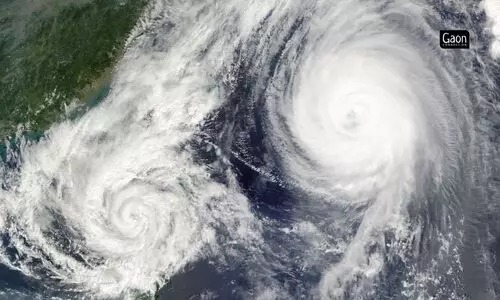It is that time of the year when all eyes are skywards, or towards the weather forecasting agencies that start issuing forecasts for the annual southwest monsoon season.
Yesterday, April 11, the official weather forecast body, the India Meteorological Department (IMD) under the Ministry of Earth Sciences issued its much-awaited monsoon forecast in which the met department has forecasted ‘normal’ southwest monsoon rainfall this year.
According to the IMD, the southwest monsoon rainfall (June to September) is likely to be 96 per cent of the Long Period Average (LPA) with an error margin of plus or minus five per cent. Long Period Average is the average seasonal rainfall recorded between the period of 1971 and 2020, and is recorded as 87 cm.
As per the met department’s forecast, 96 per cent rainfall of the Long Period Average this year is expected to be 83.5 cm.The IMD press release noted that “normal to below normal rainfall is likely over some areas of Northwest India and parts of West-Central India and some pockets of Northeast India.”
It further said that “the spatial distribution suggests normal to above normal rainfall likely over many areas of Peninsular India and adjoining East Central India, Northeast India and over some parts of Northwest India.”
Skymet forecasts ‘below normal’ monsoon
In contrast to IMD, Skymet, a private weather forecasting and agriculture risk solution company, has forecasted the seasonal southwest monsoon to be ‘below normal’ — 94 per cent of Long Period Average — this year. Skymet issued its monsoon forecast on April 10, a day before IMD’s official forecast.
According to Skymet, monsoon probabilities for June to September are as follows:
0 % chance of excess (seasonal rainfall that is more than 110% of LPA)
15 % chance of above normal (seasonal rainfall that is between 105 to 110% of LPA)
25 % chance of normal (seasonal rainfall that is between 96 to 104% of LPA)
40 % chance of below normal (seasonal rainfall that is between 90 to 95% of LPA)
20 % chance of drought (seasonal rainfall that is less than 90% of LPA)
El Niño to blame?
According to weather agencies, El Niño could impact the southwest monsoon rainfall this year. As per the IMD press release, currently, La Niña conditions have changed to ‘neutral’ conditions over the equatorial Pacific region. And the climate model forecast indicates that El Niño conditions are likely to develop during the monsoon season. El Niño is often linked to below normal monsoon rainfall in the Indian subcontinent leading to drought.
Around 83.5cm of rainfall is expected for the monsoon months (June to September) all across India which is around 96% of the Long Period Average (LPA) with model error of ± 5%, falling under the normal category: Director General of Meteorology, IMD, Dr. M. Mohapatra@moesgoi pic.twitter.com/zIR6KufykO
— PIB India (@PIB_India) April 11, 2023
The IMD has also noted that at present, neutral IOD (Indian Ocean Dipole) conditions are present over the Indian Ocean and the latest climate model forecast indicates that the positive IOD conditions are likely to develop during the southwest monsoon season.
It has been observed that during the period of positive IOD, the Indian summer monsoon rainfall is considerably good as compared to the negative IOD period.
As sea surface temperature (SST) conditions over the Pacific and the Indian Oceans are known to have a strong influence on the Indian monsoon, IMD said that it is carefully monitoring the evolution of sea surface conditions over these Ocean basins.
Also Read: Same story, different year: High February temperatures haunt wheat farmers for 2nd consecutive year
Meanwhile, as quoted in its press release, according to Jatin Singh, Managing Director, Skymet, “La Nina (heavy monsoon effect) has ended. The likelihood of El Niño (scarce rainfall) is increasing, and its probability to become a dominant category during the monsoon is growing large. El Niño return may presage a weaker monsoon.”
Already taking the brunt of early heatwaves, a poor monsoon could be a disaster for the agricultural economy of the country. The monsoon accounts for around 70 per cent of the country’s annual rainfall, determining the yield of key crops such as rice, wheat, sugarcane. It irrigates 51 per cent of its net sown area, accounting for nearly 40 percent of the total food production.
According to the IMD, the five categories of probable forecasts for the seasonal (June to September) rainfall are as follows:
less than 90 per cent of LPA is in the ‘deficient’ category;
90 to 95 per cent of LPA is ‘below normal’;
96 to 104 per cent of LPA is ‘normal’;
105-110 per cent of LPA is ‘above normal’;
and more than 110 per cent of LPA is ‘excess’.




















